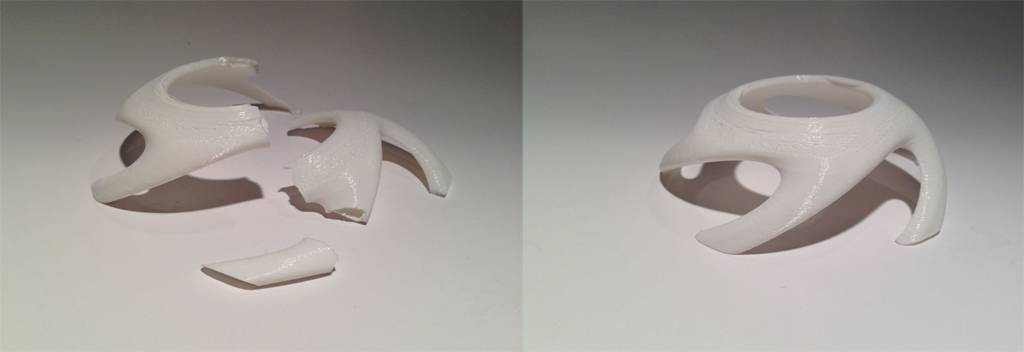
We’ve uncovered a very curious patent application from MakerBot that seems to indicate they’re developing an automated way to reconstruct broken objects.
The patent application, part of a series of patent applications for various usage scenarios, makes this claim:
A method comprising: providing a broken part having a number of pieces including a first piece and a second piece broken from an integral part; scanning the first piece and the second piece to obtain a first digital model and a second digital model; providing information about the integral part; processing the information, the first digital model, and the second digital model to obtain a third digital model of the integral part prior to becoming broken; and fabricating a duplicate of the integral part from the third model.
What does this mean, exactly? In spite of the near-unintelligible legal wording we believe it could mean this:
You 3D scan the broken pieces of an item; software reconstructs the original object, which can then be 3D printed – replacing the original broken item.
This could be a game-changing new usage scenario for 3D printing, if MakerBot can pull it off. It will require some tricky 3D software to logically assemble broken bits into a new model that closely resembles the original object.
There will be limits to what’s possible. Imagine an item cracked into so many small pieces that the fragments would become ambiguous: You could not reconstruct the object. This is why we think this process is intended for scenarios involving a small number of broken pieces scenarios only.
We’re very interested to see if MakerBot follows through on this, because watching the reconstruction process unfold will seem like magic.
Via Google Patents

